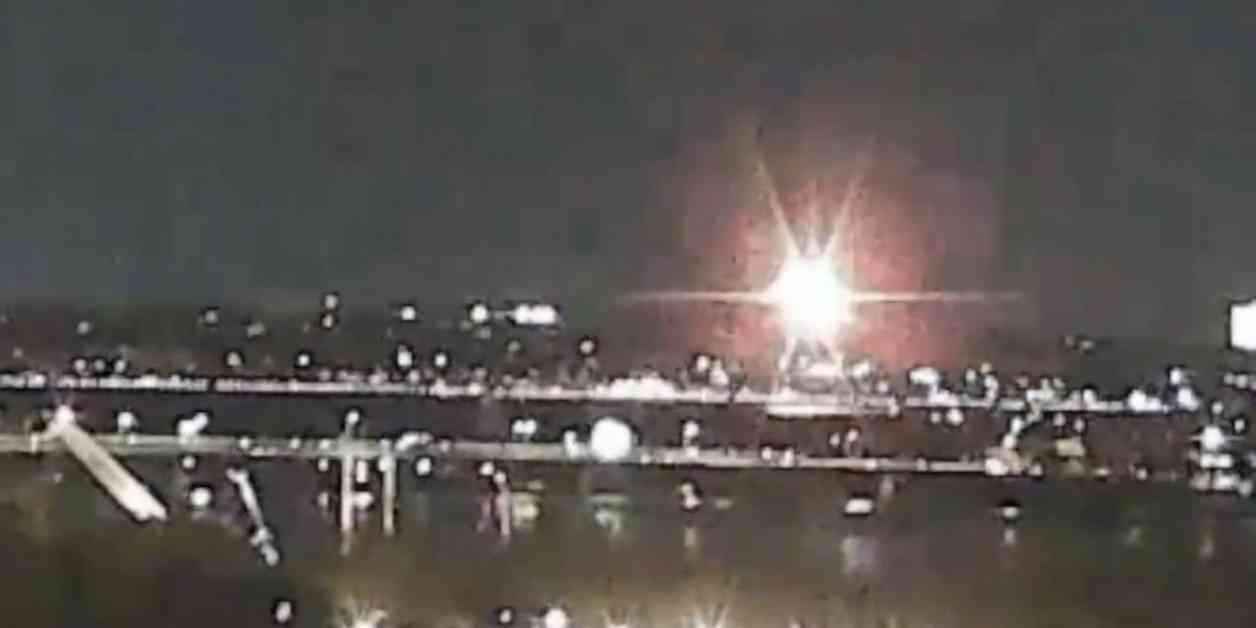A shocking tragedy unfolded over the Potomac River as an American Airlines regional jet collided with a Black Hawk helicopter, sending shockwaves through Washington, D.C. The incident, captured on EarthCam video, left witnesses near the river in a state of disbelief and fear, describing the sound as akin to scenes from action movies.
Witnesses recounted the harrowing moment when the collision occurred, with one saying, “I heard bang bang … like in action movies.” The sheer magnitude of the crash left many in shock, as the reality of the disaster began to sink in.
Former NTSB investigator shed light on the complexity of the airspace over Reagan National Airport, highlighting the limited room for error in such a congested and high-traffic area. The intricate dance of planes and helicopters in this airspace leaves little margin for mistakes, making safety a top priority for air traffic control and pilots alike.
As search and rescue operations unfolded, NBC Washington provided crucial updates on the recovery efforts. Reports indicated that 12 bodies had been recovered from the crash site, underscoring the devastating impact of the collision on both the American Airlines passengers and the occupants of the Black Hawk helicopter.
The gravity of the situation was further emphasized by the involvement of over 300 first responders at the scene of the crash, illustrating the scale of the rescue mission. Their tireless efforts in the face of challenging conditions, including cold temperatures, highlighted the bravery and commitment of these emergency personnel.
American Airlines CEO expressed condolences for the tragic event, acknowledging the loss of life and the profound impact it had on all those involved. The aviation community rallied around the victims and their families, offering support and solidarity in the wake of the disaster.
Law enforcement officials revealed that the American Airlines plane had broken into two pieces upon impact, adding a grim detail to the already tragic narrative. The investigation into the causes of the collision began in earnest, with a focus on understanding what led to the catastrophic event.
In a special report, the sequence of events leading up to the crash was dissected, shedding light on the factors that contributed to the fatal collision. The intricate details of the incident were analyzed, providing insight into the challenges faced by air traffic controllers and pilots in such a busy airspace.
The close proximity of the runways at Reagan National Airport to the Potomac River raised questions about the safety of the flight paths in the area. The unique geography of the airport, with runways bordering the river, added a layer of complexity to the airspace management in the region.
As the rescue efforts continued, the community came together to support the victims and their families during this difficult time. The tragedy served as a sobering reminder of the risks inherent in air travel, prompting a renewed focus on safety and vigilance in the aviation industry.
In the aftermath of the crash, the aviation community united in mourning the lives lost and honoring the memory of those affected by the tragedy. The resilience and courage displayed by first responders and emergency personnel underscored the unwavering commitment to saving lives in the face of adversity.


